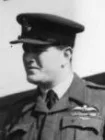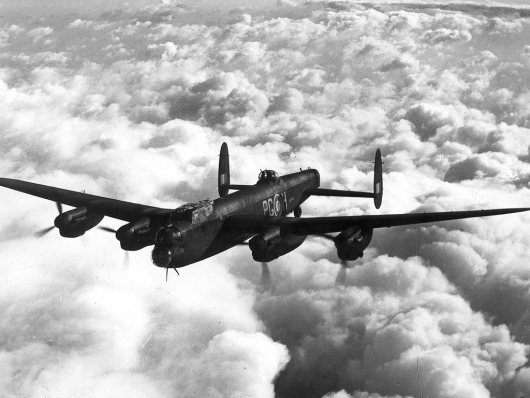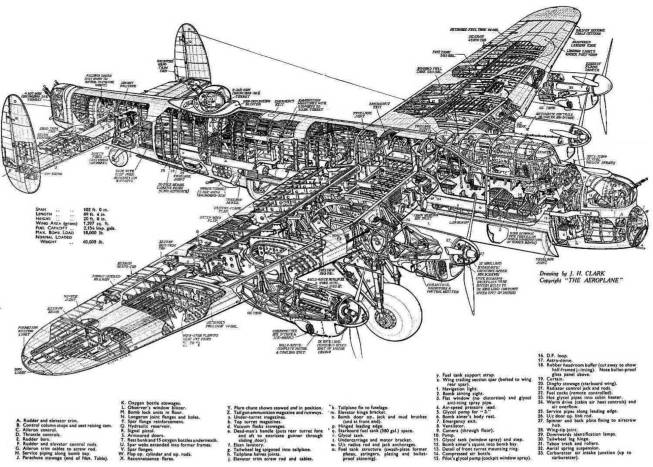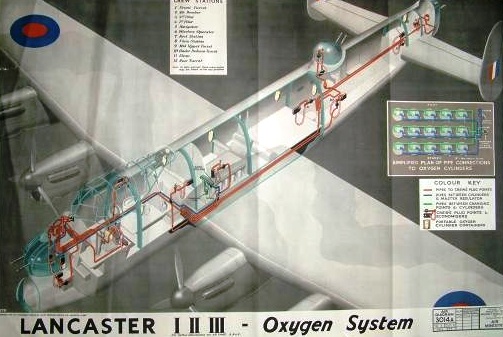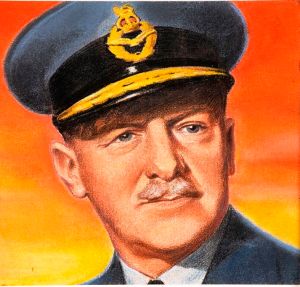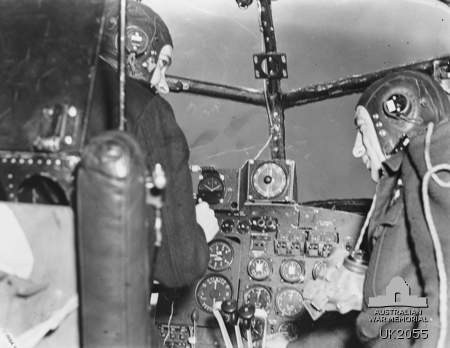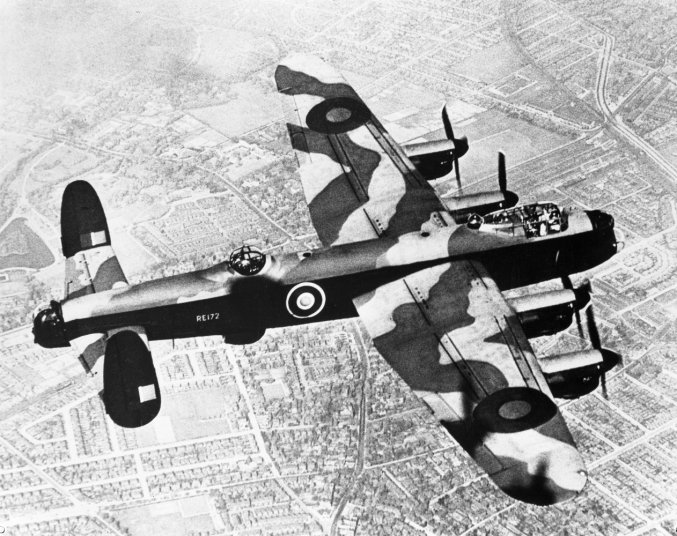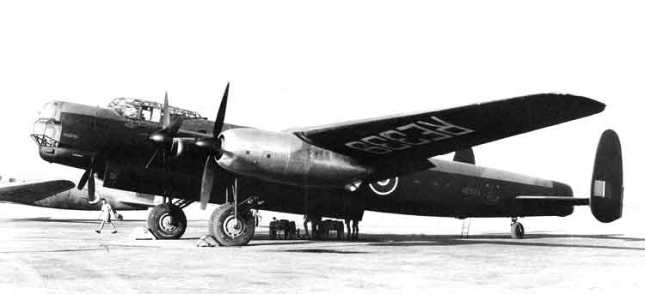The Avro Lancaster Bomber

Avro was Founded on 1st January 1910 by Alliott Verdon Roe at the Brownsfield Mill on Great Ancoats Street in Manchester. The Company remained Based primarily in Lancashire throughout its 53-yrs of existence with key Developmental & Manufacturing Sites in Alexandra Park Aerodrome, Chadderton (Oldham), Trafford Park & New Hall Farm, Woodford, Cheshire.
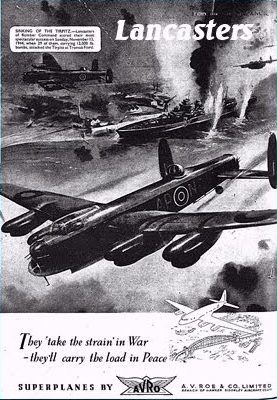
Edwin Alliott Verdon-Roe (AV) was already known in the early part of the 20thC for his Aeroplane experiments at Brooklands & at Lee Marshes, where he finally achieved his 1st controlled successful Flight in July 1909. With Production escalating & with a general lack of Flying Facilities close to the Manchester Factories, A V Roe selected Hamble on the South Coast near Portsmouth as a suitable Site for the creation of a new ‘Garden City’, a place where both Aeroplanes & Flying-boats could be Built with Employees living locally in 450 newly-built Houses.
Designer Roy Chadwick had joined Avro at Brownsfield Mill in 1911, working initially as the Firm’s Draughtsman before moving to their new Avro Experimental Test Station which eventually opened at Hamble in 1916. Chadwick flourished in his new environment and from 1918 he took responsibility for a number of Avro Designs including the Avro Baby & Avro Avian. In 1924, Alexandra Park closed & their Operation moved to New Hall Farm, Woodford, Cheshire which was later to become the Woodford Aerodrome. Meanwhile, production continued at Newton Heath with Final Assembly & Testing carried out at Woodford.
During 1928 Alliott Verdon-Roe sold his Shares in the Company & with the proceeds purchased The S E Saunders Company & created Saunders-Roe Limited (SARO) based at Hamble. With the Sale of his shares to J D Siddeley, A V Roe & Co became part of the Armstrong Siddeley Development Company, a sister Company of Armstrong Whitworth. With AV’s departure from the Company, his ‘Personal Assistant’ Roy Chadwick returned to Newton Heath to take on the Role of Chief Designer.
A British 4-Engined WW2 Heavy Bomber Designed & built by Avro for the RAF. The Lancaster 1st saw active Service with RAF Bomber Command in 1942 & as the Strategic Bombing Offensive over Europe gathered momentum, it became the main Heavy Bomber used by the RAF, the RCAF & Squadrons from other Commonwealth & European Countries serving within the RAF, overshadowing its close contemporaries the Handley Page Halifax & Short Stirling. The “Lanc“, as it was affectionately known, thus became the most famous & most successful of the WW2 Night Bombers, “delivering 608,612 long Tons of Bombs in 156,000 Sorties.”
The Lancaster, an evolution of the troublesome Avro Manchester, was designed by Roy Chadwick and was powered by 4-Rolls-Royce Merlins, or, in one version, Bristol Hercules Engines. A long, unobstructed Bomb Bay meant that the Lancaster could take even the largest Bombs used by the RAF, including, the 4,000-lb (1,812-kg), 8,000-lb (3,629-kg), or 12,000-lb (5,443-kg) Blockbusters, Loads often supplemented with smaller Bombs or Incendiaries. The versatility of the Lancaster was such that it was chosen to equip 617–Squadron, and was modified to carry the Barnes Wallis designed Upkeep or “Bouncing bomb” for Operation Chastise, the Attack on Germany’s Ruhr Valley Dams. Although the Lancaster was primarily a Night Bomber, it excelled in many other roles, including daylight Precision Bombing: in the latter role some Lancaster’s were adapted to carry the 12,000-lb (5,443-kg) Tallboy & ultimately, the 22,000-lb (9,979-kg) Grand Slam “Earthquake” Bombs (also Designed by Wallis).
As early as 1943, a Lancaster was converted to become an Engine Test-Bed for the Metropolitan-Vickers F.2 Turbojet. Lancasters were later used to test several different Engines, including the Armstrong Siddeley Mamba & Rolls-Royce Dart Turboprops & the Avro Canada Orenda & STAL Dovern Turbojets. Postwar, the Lancaster was supplanted as the RAF’s Main Strategic Bomber by the Avro Lincoln, itself a larger permutation of the Lancaster. Instead, the Lancaster took on the role of long-Range anti-Submarine Patrol Aircraft (later supplanted by the Avro Shackleton) & Air-Sea Rescue. It was also used in roles as diverse as Photo-Reconnaissance & Aerial Mapping, as a Flying Tanker for Aerial Refuelling and as the Avro Lancastrian, a long-range, high-speed Transatlantic Passenger & Postal Delivery Airliner. In March 1946, a Lancastrian of BSAA flew the 1st Scheduled Flight from the then-new London Heathrow Airport.
Faced with this situation during the Summer of 1940, British Prime Minister Winston Churchill threw his support behind the Defensive Power of the Royal Air Force’s Fighter Command and the Development of Bomber Command with the words: “The Navy can Lose us the War, but only the Air Force can Win it. Therefore our supreme effort must be to gain overwhelming Mastery in the Air. The Fighters are our Salvation, but the Bombers alone provide the means of Victory.” With this decision, a massive effort was begun towards the production of Heavy Bombers & the Training of Aircrew to Fly them.
The Avro Lancaster evolved from Britain’s concerns regarding the deteriorating International situation during the late 1930‘s. The Handley-Page Halifax, Short Stirling & the twin-Engined Avro Manchester were all in the Planning stages as the War began in 1939. The Prototype Twin-Engined Manchester Flew in 1939 but was Plagued by Instability & problems with its complex, 24-cylinder Rolls Royce Vulture Engines. Of the 202-Manchesters built more were Lost to Engine Failure than Enemy Action.
But even before the Manchester Flew on Operations, the Aircraft’s Designer, Roy Chadwick, realised that the Aircraft would have serious shortcomings & made Plans for its modification. He added 12-ft to the Wingspan & replaced the 2 troublesome Vulture Engines with 4 of the proven Rolls Royce Merlins V-12’s and the result was the Lancaster which made its Maiden Flight in January 1941. A colleague later wrote that Chadwick, “showed himself to be a most resourceful & courageous Designer, ultimately snatching Success from Failure in the most ingenious way with a superlatively successful Operational Aircraft.”
The new Bomber was immediately regarded as a success & large Production Orders were placed. Avro’s Production Facilities were soon Overwhelmed & numerous other Companies & Contractors joined the effort to Produce Lancasters. Consisting of 55,000 separate parts, it has been estimated that 0.5M different Manufacturing Operations were involved to Produce just 1-Aircraft. Peak production was achieved during August 1944 when 293 Aircraft were Produced. Lancaster’s 1st Flew Operationally in March 1942 & were well received by their Aircrew. It was regarded as “a Pilot’s Aeroplane” which inspired confidence. Evidence of this is the story of a Lancaster Flight Engineer who, having Feathered 2-Engines & facing the prospect of Flying over several 100-miles of cold, unfriendly Ocean, turned to his Pilot & said, “I suppose this means we shall be bloody late for breakfast!” The proven Rolls Royce Merlin Engines were much in demand for many types of Aircraft. For this reason, a version of the Aircraft was produced which made use of Bristol Hercules Radial Engines.
Lancasters were built to accomplish their specific purpose & Crew Comfort & Security was clearly a Secondary consideration. Generally Flying under the cover of darkness, the Lancaster had virtually no Defensive Armour. The Front, Mid-upper & Rear Gun Turrets were Hydraulically powered &* carried a total of 8 x .303 calibre Machine Guns for Defence against Enemy Aircraft. The Crew worked in cramped conditions, particularly the Air Gunners who remained at their Posts for the entire Flight. Some had to place their Flight Boots into the Turrets before climbing in, and then put their Boots on. At Night and at 20,000-ft the temperature in the Turrets frequently fell to –40°F & frostbite was not uncommon. Air Gunners manned the Rear & Mid-upper Gun Turrets. A Pilot, Flight Engineer, Navigator, Wireless Operator & Bomb Aimer/Front Gunner completed the Crew of 7.
Lancaster Pocket Manual: During WW2 the Lancaster was the most successful Bomber used by the RAF & the RCAF. The Lanc had Speed, Ceiling & Lifting Power that no other Aircraft of the day could match. Weighing 36,900-lbs empty, the Lancaster was capable of taking off with an additional 33,100-lbs of Fuel & Bombs; in other words, it could almost carry its own weight again. The Lancaster carried 64% of the Tonnage dropped by the RAF & RCAF during the War. The “Grand Slam“, a 22,000-lb special-purpose Bomb designed to penetrate Concrete & explode below the Surface to create an Earthquake Effect, could only be delivered by the Lancaster & the Lancaster was thus chosen for Special Operations such as the “Dambusters” Raid and the Attack which sunk the German Battleship, Tirpitz.
Lancaster – Pilot’s & Flight Engineers Notes

The Lanc’s massive Bomb bay stretched for 33-ft & unlike other Bombers, was one continuous uninterrupted space. Partly for this reason, the Lanc had the versatility to undertake Raids with large, Specialised Weapons.
However, this meant that the Main Wing Spars became obstacles to movement within the Aircraft, particularly for Airmen wearing heavy clothing & Flight Boots.
Of the Total of 7,377 Lancasters Built (430 of them in Canada), 3,932 were Lost in Action. During the War, Lancasters flew a Total of 156,308 Sorties, dropped 608,612 Tons of Bombs & placed over 12,000 Mines in Enemy Waters. Some of the Aircraft’s finest hours were in “non-offensive” Operations as the War was about end & shortly after Peace finally was in place. The 1st of these was during “Operation Manna.” Lancaster Squadrons dispatched a Total of 3,156 Sorties to drop 6,684 Tons of Food Supplies to the starving Dutch in May 1945. The 2nd saw many of the Lancaster Squadrons tasked to return Allied Prisoners of War from various locations throughout Europe back to England. In a period of 24-days, a total of 2900 round trips were flown & 74,000 ex-PoW’s were returned. (Operation Exodus)
With the end of hostilities on all War Fronts, the Lancaster was by no means finished in its Service. The RAF continued to use the Aircraft in various roles including Photographic & Maritime duties until October 1956. The RCAF, who flew back many of the surviving Mk.X’s back to Canada, continued to use the Aircraft in Photographic & Maritime Reconnaissance roles until the early 1960s. The last 3–RCAF Lancasters were retired at a Ceremony on 1st April 1964.
What is probably the finest tribute to the Aircraft was written by Marshall of the Royal Air Force Sir Arthur T Harris, Wartime Chief of Bomber Command:
“The Finest Bomber of the War! Its efficiency was almost incredible, both in Performance & in the way it could be saddled with ever-increasing Loads without breaking the Camel’s Back. The Lancaster far surpassed all the other Types of Heavy Bombers. Not only could it take heavier Bomb Loads, not only was it easier to handle & not only were there fewer accidents than with other Types, but the Casualty Rate was also consistently below those of other Types.” “The Lancaster took the major part in winning the War with its Attacks on Germany. On Land, it Forced the Germans to retrieve from their Armies half their sorely needed anti-Tank Guns for use by over a million Flak Soldiers who would otherwise have been serving in the Field. The Lancaster won the Naval War by destroying over 1/3rd of the German Submarines in their Ports, together with 100s of small Naval Craft and 6 of their largest Warships. Above all, the Lancaster won the Air War by taking the major part in forcing Germany to concentrate on building & using Fighters to defend the Fatherland, thereby depriving their Armies of essential Air & particularly Bomber support.”
The Mark VII, was the final Production version, with the Dorsal Turret moved slightly forward & the Tail Turret’s 4 x 0.303inch Machine Guns replaced by 2 of 0.5-inch calibre. This Mark was designed to be more suitable for Operation in the Tropics, as part of “Tiger Force“, the British contribution to the invasion of Japan (and so never being required).
The Cockpit. Europe’s last remaining Airworthy Lancaster, had Dual Controls fitted, Wartime Lancasters had only 1 set of Controls, meaning that if the Pilot was Killed or badly wounded, the Aircraft was almost always Doomed. The Avro Lancaster Bomber was a key Weapon of the Allies during the War. More than 7,000 were produced, which flew a total of more than 150,000 Missions – from which more than 3,000-Planes were never to return. The roar of a Bomber Squadron Taking-off & Returning was a familiar Sound to many 1,000s of people living in Southern England. The Lancaster remains a feature of events to commemorate the War.
Bomber Crew

She is 69ft-6in long, 19ft-7in high, has a Wingspan of 102ft & was powered by 4-Merlin 1,280hp Engines. She had a top speed of 287mph, carried a Crew of 7 & could drop up to 22,000-lb of Bombs. The Crew comprised a Bomb Aimer, who lay in the Nose of the Plane, the Pilot, who sat behind & above him, with a Flight Engineer on a collapsible “Dicky” seat to his right. Behind were a Navigator, Radio Operator, Mid-upper Gunner & Rear Gunner. RAF Hendon’s Richard Simpson said: “The Lancaster is an iconic Plane & this one is particularly important. It’s the oldest & has the greatest Operational History.” Originally called Q-Queenie, S-Sugar did not take part in the Dambusters Raids of 16th May 1943, when the Lancasters Flew just 60ft above the water before dropping their deadly Cargo. Eight Aircraft were lost that day & 53 of the 133-men who took part did not return.
•A new Book about the Dambusters, Breaching The German Dams: Flying Into History, was Published and is available from RAF Hendon.
Pan 360 Panoramic Views of Cockpit etc.
If you are interested to read more about the Avro Lancaster & the men who Flew them, we highly recommend ‘Luck & a Lancaster‘ by Harry Yates DFC, ‘No Moon Tonight‘ by Don Charlwood & ‘Tail Gunner‘ by Chan Chandler DFC. Martin Middlebrooks Books, ‘The Battle of Hamburg‘, ‘The Berlin Raids‘ & ‘The Nuremberg Raid‘ all come highly recommended & provide an insight into the Air War from all angles, from Commonwealth & German Aircrew through to the Civilians on the Ground
“The name Lancaster became synonymous with the Winning of it.” wrote Mike Garbett & Brian Goulding in their excellent book Lancaster at War.
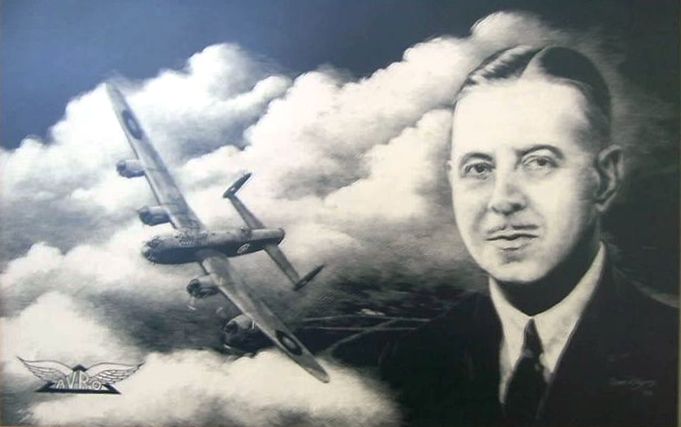
Roy Chadwick, Chief Designer of A V Roe, knew from the start that they had a winner. “Oh Boy, Oh Boy… what an Aeroplane! What a piece of Aeroplane!” was reportedly his comment while observing the 1st Flight of a Prototype Lancaster in January 1941. The 1st RAF Squadron to re-equip with the Lancaster was No.44 Squadron based at Waddington in December 1941. The 1st Lancaster offensive Sortie was made against Essen on the Night of 10/11th March 1942.
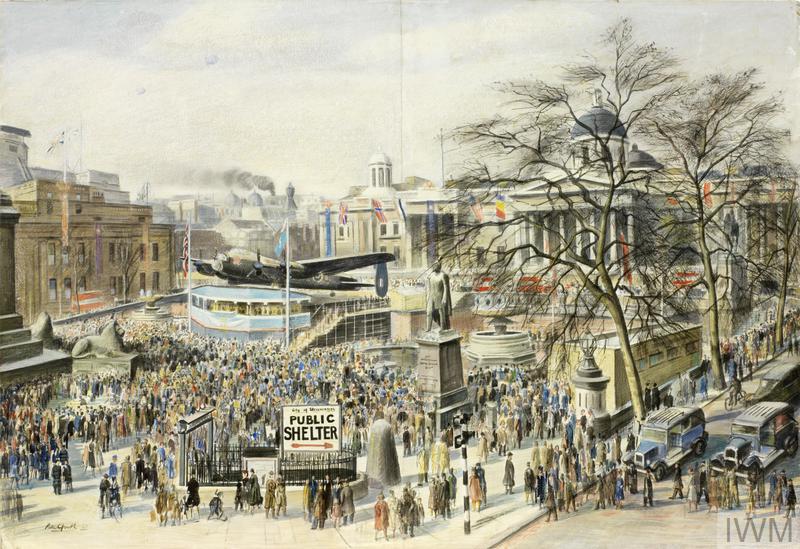
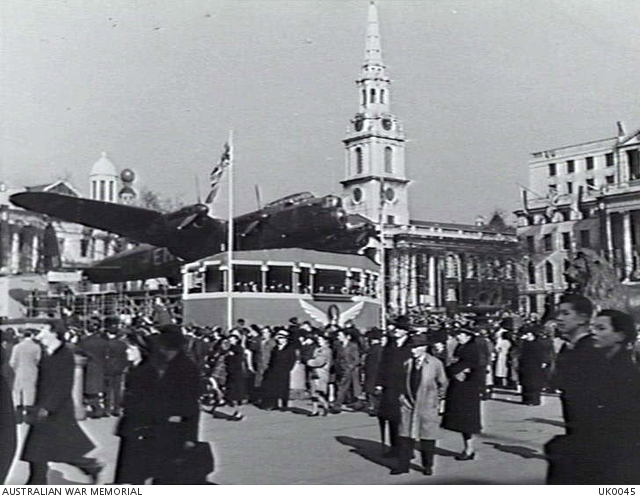
Roy Chadwick was right in his judgement. The Lancaster was undoubtedly one of the best, perhaps maybe the best of the Heavy Bombers used by the Allies during the War, all factors counted. Rugged & Reliable. A Workhorse being able to carry larger Bomb Loads than any other Bomber used in Europe. Also a Pilot’s Aircraft, pleasant to Fly with no handling peculiarities so common to most of the other Aircraft of the Period. This single Aircraft made possible the escalation of the Night Bomber Offensive over Germany& was, according to Sir Arthur Harris, Chief of Bomber Command; the “greatest single Factor in Winning the War“.
The accepted number of total Lancasters produced is 7374. Of this total, 3932 Aircraft were lost on Operations, representing over 20,000 Aircrew either killed, captured or injured.
It is nigh 80-yrs since the Lancaster last flew Operationally. The last RAF Machines were withdrawn in 1956. The last users, Canadian, French Navy & Argentinean Air Forces retired their last Lancasters in 1964. Today about 20 identifiable Airframes are known to exist in the world. Of these only 2, The Battle of Britain Memorial Flight’s PA474 and the Canadian Warplane Heritage FM213 continued to Fly but Insurance put to that. The remainder are, by & large, preserved in various Locations throughout the World.
The Avro Lincoln Series of British 4-Engined Heavy Bombers arrived too late to see Action in WW2.
Avro Lincoln RE339 Flying Test-Bed for the Theseus Turboprop Engine. The Theseus was the Bristol Aeroplane Company’s 1st attempt at a Gas-Turbine Engine Design, a Turboprop that delivered just over 2,0000-hp (1,500-kW). A novel feature was the use of a Heat Exchanger to transfer Waste Heat from the Exhaust to the Compressor Exit. The Engine was soon superseded by the Proteus Design with more Power & the only extended use of the Engine was in 2–Handley Page Hermes 5 Development Aircraft. Following 156-hrs of Ground runs and the receipt of a Test Certificate from the Ministry of Supply on 28th January 1947, 2–Theseus Engines were fitted in the outer positions of a 4-Engined Avro Lincoln for Air Tests. After Ground & Taxiing Test the Lincoln 1st Flew on 17th February 1947. In the late-1940‘s the Engine Division of the Bristol Factory was heavily involved in Gas Turbine Development. One of their 1st Engines the Axial Flow Theseus Engine was long-term Tested in a converted Lincoln Bomber. The 2-Outboard Engines were replaced with the Theseus Gas Turbine Turboprop & were then used on regular Services to Egypt during 1948-49 to gain experience of Turboprop Operation.
